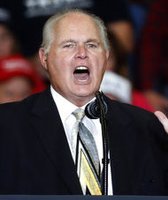Get PolitiFact in your inbox.
Donald Trump has said repeatedly that there isn’t much new information to learn in his tax returns, defending his much-derided decision not to make them public. Yet just three pages of his 1995 tax returns, uncovered by the New York Times this past weekend, reveal significant facts.
In 1995, Trump reported a $916 million loss, according to the three pages of returns obtained and verified by the New York Times in September. These losses stemmed from significant financial problems across many of Trump’s businesses in the 1990s, including at least four major bankruptcies.
At the Sept. 26 presidential debate, a few before the New York Times story came out, Clinton suggested Trump may not want to release his tax returns because he doesn’t pay income taxes.
"That makes me smart," Trump replied, without confirming or denying Clinton’s charge.
As it turns out, the 1995 returns also show it’s possible Trump was able to avoid paying federal income tax for as much as 18 years, legally.
A tax provision known as net operating loss allows people to report various losses from their businesses on their personal tax returns as a deduction. So if a person’s reported net operating loss is equal to or larger than their personal income, that person does not have to pay income taxes.
A loss as large as Trump’s, $916 million, could counteract any income Trump earned in 1995 and several years before and after, up to 18 years total under IRS rules in 1995, according to the New York Times.
Trump hasn’t released any of his tax returns from any year on his own accord, citing an ongoing IRS audit, even though the IRS has said an audit does not bar someone from releasing their own returns. Former President Richard Nixon released his returns while undergoing an audit.
There is no law requiring Trump, as a presidential candidate, to release his tax returns. However, tradition has compelled nearly every presidential candidate over the past several decades to release their tax returns during an election. For comparison, Trump’s opponent Hillary Clinton has released the past nine years of returns.
The New York Times’ discovery puts in a new light Trump’s previous claims that his public financial disclosure forms, which law does require of presidential candidates, reveal more information than his tax returns. They don’t.
His financial disclosure form is extensive, including 92 pages of small-print details on assets and income. But there’s a good deal of information that Trump’s tax returns would reveal that his financial disclosure forms don’t, such as his effective tax rate, the types of taxes he paid, and how much he gave to charity, as well as a more detailed picture of his income-producing assets.
We know a little bit about Trump’s taxes in the 1970s. A 1981 report by New Jersey gambling regulators analyzed Trump's finances as part of his efforts to get a casino license for a proposed casino-hotel complex. Page 33 reports on Trump's income and federal tax payments for 1975 through 1979.
The report says that Trump paid federal taxes for three of those five years, 1975-77. Trump did not pay federal income tax in 1978 and 1979 because, according to the tax rules, he lost money those years. But the report reveals no specifics, so the details of his tax returns for those years remain a mystery.
In response to the New York Times’ story, Trump’s campaign said in a statement, "Mr. Trump knows the tax code far better than anyone who has ever run for president and he is the only one that knows how to fix it."
Trump’s opponents, though, argue that his proposed tax plan will benefit wealthy people, like Trump, the most.
The nonpartisan Tax Policy Center analyzed Trump’s proposal and found that on average, households at all income levels would receive tax cuts, as of May 2016. But the top 0.1 of taxpayers would receive 18 percent of the tax reduction, while the bottom 60 percent of taxpayers would receive 16.4 percent of the reduction.
Our Sources
New York Times, "Donald Trump Tax Records Show He Could Have Avoided Taxes for Nearly Two Decades, The Times Found," Oct. 1, 2016
See individual fact-checks for further sources.
















































